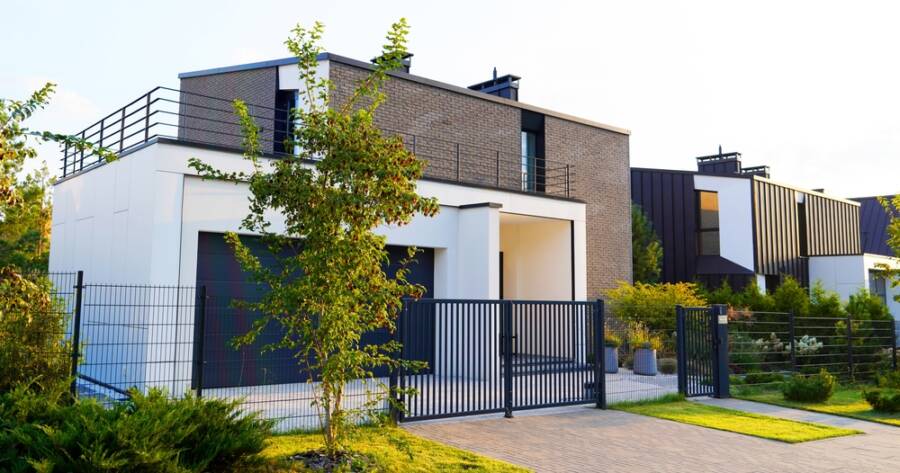Prefabricated homes have emerged as a stylish and sustainable alternative in the real estate sector, offering durable and affordable solutions for eco-conscious living. Some homes integrate cutting-edge designs with environmental benefits, economic advantages, and adaptability to diverse climates. Understand how prefabricated homes are setting new standards in sustainable living.
Why Are Prefabricated Homes Making Waves?
In recent years, the push toward sustainable living has influenced various sectors, including real estate development. Prefabricated homes, once seen as mere budget-friendly alternatives, are now at the forefront of eco-conscious living. These homes are not only stylish and durable but also present an affordable option for those keen on reducing environmental impact.
A notable feature of these homes is their engineered design, which meets high standards for seismic, fire, and hurricane safety. These homes feature rust-proof composite structures and reinforced chassis that enable durability in various climates.
Environmental Benefits of Prefabricated Homes
Living in a prefabricated home has several environmental advantages. Companies like Lindal Homes emphasize integrating sustainability into every aspect of their homes, from design to construction. Their focus ensures that these homes offer energy-efficient windows and other sustainable materials to reduce carbon footprints.
Ecokit homes, for instance, promise a reduction in utility bills by as much as 70% due to extensive super insulation and use of natural materials which are low in VOC, ensuring a high-quality living environment.
Design and Construction Features
Prefabricated homes come with customizable and adaptable designs that cater to various aesthetic and functional preferences. Modern modular homes offer a stylish solution with customizable floor plans, exterior finishes, and interior fixtures to match personal tastes. Additionally, these homes integrate energy-efficient features, such as recycled steel and bamboo flooring, which contribute to sustainability.
Their modular nature allows for quick assembly, with minimal on-site errors due to pre-measured components. Construction in a controlled factory environment minimizes waste and ensures precise construction, leading to cost savings in comparison to traditional techniques.
Adaptability and Flexibility
One of the most appealing aspects of prefabricated homes is their adaptability. Options such as autonomous waste disposal and solar energy storage offer support for off-grid living, further minimizing environmental impact.
These homes are designed to withstand harsh weather conditions, making them ideal for diverse locations ranging from remote deserts to coastal areas. EcoCraft Homes, renowned for their Eco-friendly strategies, offers bright and adaptable living spaces filled with natural light, creating seamless harmony with the surrounding environment.
Economic Advantages of Prefabricated Homes
Beyond their environmental perks, prefabricated homes present significant economic benefits. They offer quick and efficient installation since modules are constructed simultaneously with site preparation, drastically reducing time and costs.
Companies such as Next Modular highlight the advantage of cost efficiency through reduced material waste, providing a smart financial choice for homebuyers. Moreover, these homes often come with various financing and mortgage options, making them a viable investment opportunity for a wide range of prospective homeowners.
How Much Do Prefabricated Homes Cost?
One of the biggest questions for anyone considering a prefabricated home is cost. Prices vary depending on the builder, materials, size, and level of customization. While some models are designed to be highly affordable, others fall into the premium range with luxury finishes and advanced sustainability features. Here are a few examples of current pricing from leading companies:
- Dvele Modern Homes – Starting around $265 per square foot, with solar-ready smart features.
- Plant Prefab LivingHome 6 Series – From $260,000 (approx. $175 per square foot) for two- to three-bedroom layouts.
- Method Homes M Series – Entry-level options from $170,000, with more advanced models starting at $280,000.
- CleverHomes – Customized eco-friendly homes typically range $500–$600 per square foot, including fees and construction.
- IdeaBox Confluence Model – Base price of about $258,000 for a two-bedroom, two-bath design.
- EcoCraft Homes EcoMod 2.0 – Starting at $285,000 or around $190 per square foot.
- Bamboo Living Pacific Queen – From $104,670 for a hybrid model, or $131,645 fully prefabricated.
- Go Home by GO Logic – Typically $400–$500 per square foot, before site work and upgrades.
- Ecocor Passive Houses – Starting at $271,000, with energy-efficient designs and Passiv Shell options.
- Deltec Homes Classic 360 Collection – Entry-level shells begin at $148,000, with turnkey models reaching $500,000+.
- Phoenix Haus Models – From about $299 per square foot, with advanced passive house certifications.
Overall, prefabricated home costs range widely—from just over $100,000 for basic models to $600 per square foot for premium sustainable builds. Prices also vary by company, location, and customization, so it’s essential to research carefully to find the right balance of style, features, and affordability for your budget and lifestyle.
Learn More About Prefabricated Homes
Prefabricated homes offer a visionary path to sustainable living without sacrificing style, durability, or affordability. Their innovative designs, coupled with environmental and economic benefits, make them a suitable choice for eco-conscious individuals seeking to live in harmony with nature.
As demand grows, advancements continue in materials and technologies, further cementing these homes as a cornerstone of the future of real estate. For those considering a move to sustainable living, prefabricated homes represent a leading option worth exploring further.
Sources
Eco-friendly Safety and Adaptability
Sustainability Efforts by Lindal Homes
Energy Efficiency and Sustainable Design

